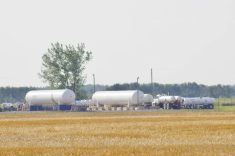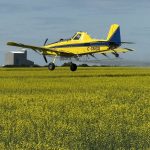Farm groups say they won’t be snoozing when a study comes out next month on the arcane process of calculating railways’ cost of capital.
Because if they snooze, they might lose and farmers will wind up paying more in freight rates.
“I’m sure the railroads are saying there should be an adjustment In their cost of capital) because they are buying bigger hopper cars and are looking at buying larger engines,” Chuck Fossay, chair of KAP’s transportation committee, said in an interview last week.
Read Also

Mazergroup’s Bob Mazer dies
Mazergroup’s Bob Mazer, who helped grow his family’s company into a string of farm equipment dealerships and the main dealer for New Holland machinery in Saskatchewan and Manitoba, died July 6 from cancer.
“They’ll say ‘we’ve made this investment we need to get a return back on it.’ I don’t think they can put it all on the farmers’ backs, especially when you see them removing sidings and farmers have to haul further and there are less opportunities for producer cars. We’ve got to find the right balance.”
The CTA, the quasi-judicial body that regulates federal transportation, calculates the railways’ cost of capital annually. It uses the figures in a formula that determines the maximum revenue the railways can collect for hauling Western Canadian grain to port, commonly referred to as the ‘railway revenue cap.’
The CTA launched the review last year saying it felt it was time since the last consultation was in 2004.
The CTA says, “the cost of capital is the total return on net investment that is required by shareholders and debt holders so that debt costs can be paid and equity investors can be provided with an adequate return on investment consistent with the risks assumed for the period under consideration.
“This return is to provide not only a return to its shareholders through retained earnings, dividends, and capital appreciation of shares, but also to pay
financing costs such as interest expense on the company’s debt instruments.”
The CTA hired the Brattle Group to review different ways to calculate the cost of capital. Its study, along with the CTA’s consultation document, will be posted on the CTA’s website. Interested parties have about a month to respond. Submissions will posted on the CTA’s website and interested parties can respond to those too.
The CTA might decide to hold public hearings on the matter. If it does, they will be held in Ottawa in mid to late February 2011.
Then the CTA will decide which method to use.
The CWB is following the review closely, said wheat board spokesman John Lyons. The CWB already believes farmers are over paying the railways by $6.87 a tonne or $200 million a year. That’s what John Edsforth of Travacon Research Limited, concluded in a study he prepared for the CWB earlier this year.
The study has renewed calls by the CWB, as well as the Agricultural Producers of Saskatchewan, Canadian Federation of Agriculture, KAP, National Farmers Union and Wild Rose Agricultural Producers, for the federal government to review how much it costs the railways to transport grain.
When grain freight rates were government regulated under the Western Grain Transportation Act (WGTA) between 1984 and 1995 railways were allowed to earn a 20 per cent contribution above costs. That was deemed fair and adequate and thought to be what the railways’ would earn in a competitive market. But the Travacon Research study puts the current contribution, akin to a markup or margin, at 58.5 per cent.
The CTA’s last railway costing review was in 1992. KAP and the CWB contend the railways have become a lot more efficient since then and the revenue cap formula should be adjusted accordingly.
“We really believe if anything the freight costs should be coming down,” Fossay said. “But until the government is prepared to do the costing review we’re stuck in limbo. We keep pushing, but the government says it’s waiting for the results of the (railway) service review.” [email protected]
———
“We really believe if anything the freight costs should be coming down. But until the government is prepared to do the costing review we’re stuck in limbo.”
– CHUCK FOSSAY



















